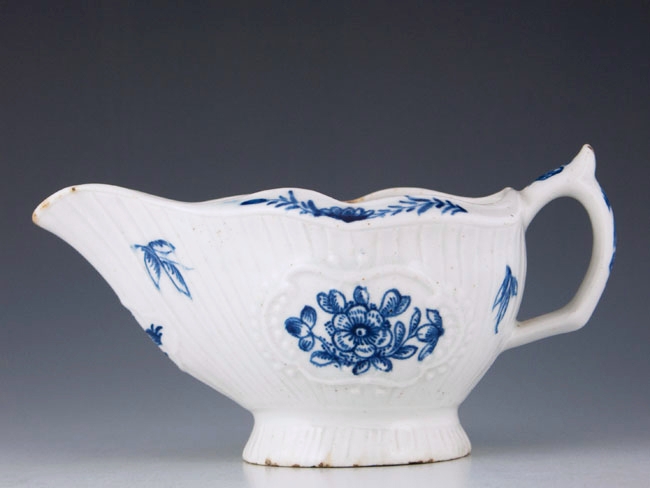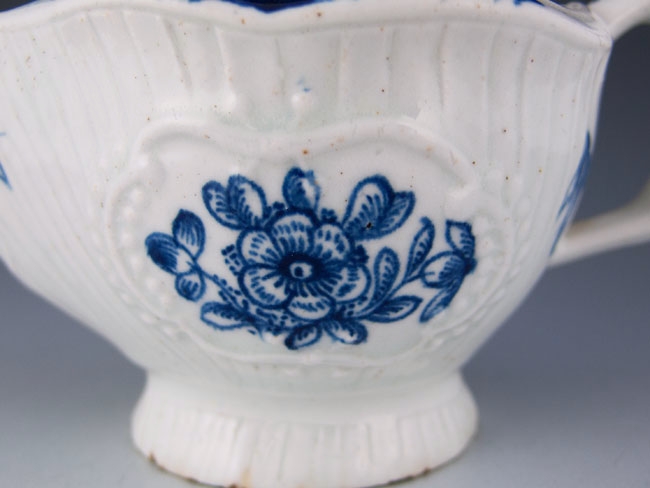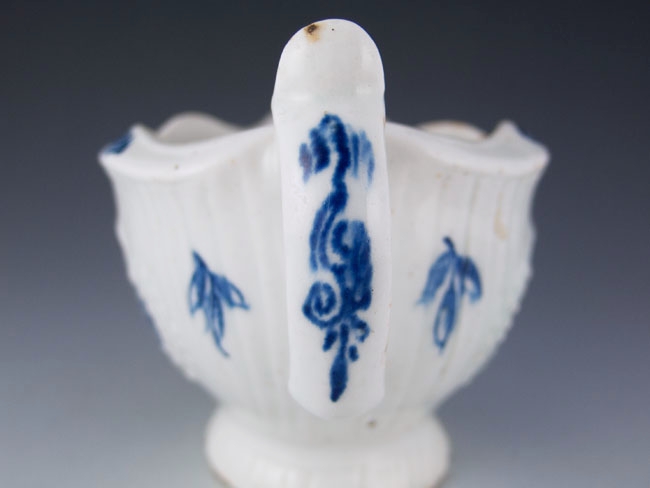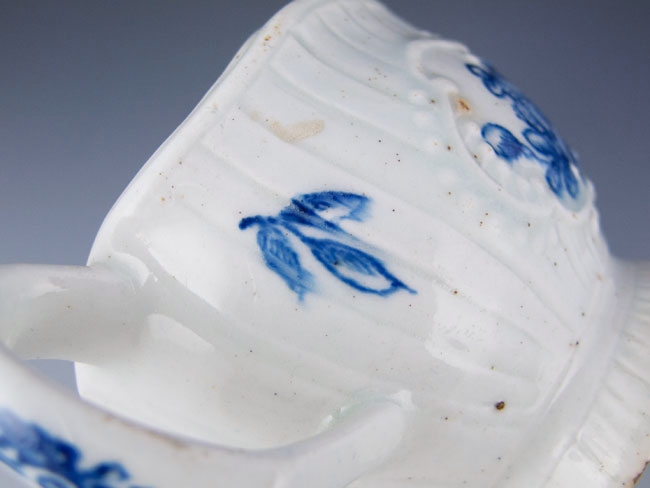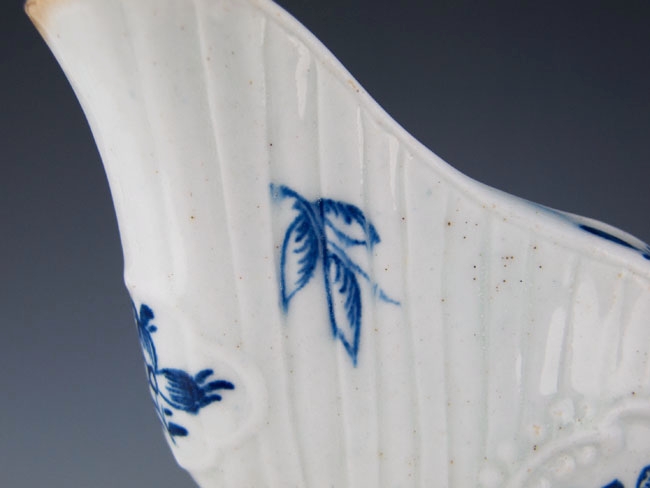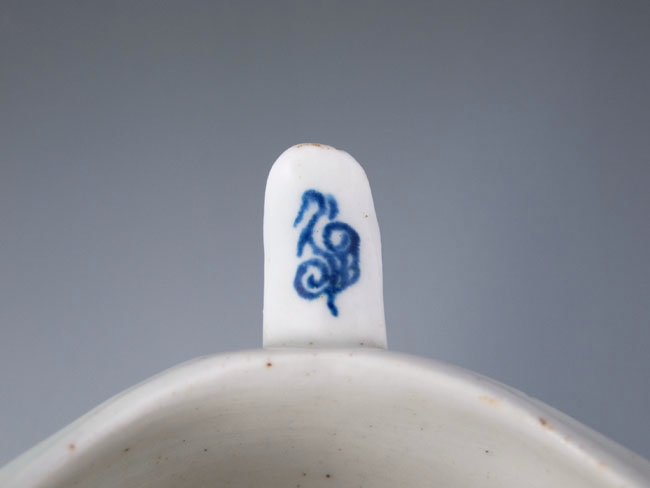An interesting English porcelain Creamboat, circa 1765-75
This pleat-moulded pedestal creamboat is decorated with two relief-moulded cartouches containing flower sprays, painted in underglaze blue. A small cartouche beneath the pouring lip contains a single flower. The remainder of the exterior is painted with scattered leaves. The interior base is painted with a small sprig. The pouring lip is painted with a similar sprig. The inverted rim is painted in underglaze blue with a trailing floral design and the handle is painted with scroll motifs.
This creamboat belongs to a small group of curious wares with characteristics typical of Isleworth porcelain, including horizontal crazing and virtually no translucency. The identity of the maker is presently unknown.
Unmarked.
Provenance: Private Collection, London.
Both the glaze and underglaze cobalt blue pigment of this piece have been tested using X-Ray Fluorescence Spectroscopy (XRF). The results, published in the English Ceramic Circle Transactions, vol. 28, 2017, reveal that the cobalt blue contains nickel. This is significant as 10 out of 10 of all confirmed Isleworth pieces contain nickel, as do all 36 of the possible Isleworth pieces tested. Compare this with the results for Bow, where no nickel is present in the cobalt blue pigment.
Condition: There are one or two patches of light chipping, glaze wear and associated light staining to the pouring lip, the rim and also the foot rim. No other damage and no restoration. There is a tiny pinhole to the thumbrest from manufacture, and also typical glazing and firing impurities and imperfections.
Dimensions: Length 12.5 cm
Transactions, vol. 28 (English Ceramic Circle, 2017). See the entry for item no. 2015-04 100, page 21.
Isleworth Pottery and Porcelain: recent discoveries, compiled by Roger Massey, Jacqueline Pearce and Ray Howard (English Ceramic Circle and Museum of London, 2003).
Godden’s Guide to Blue and White Porcelain, Geoffrey A. Godden (Antique Collectors’ Club, 2004).
British Porcelain Sauceboats of the 18th Century, Nicholas Panes (Gomer Press, 2009).


